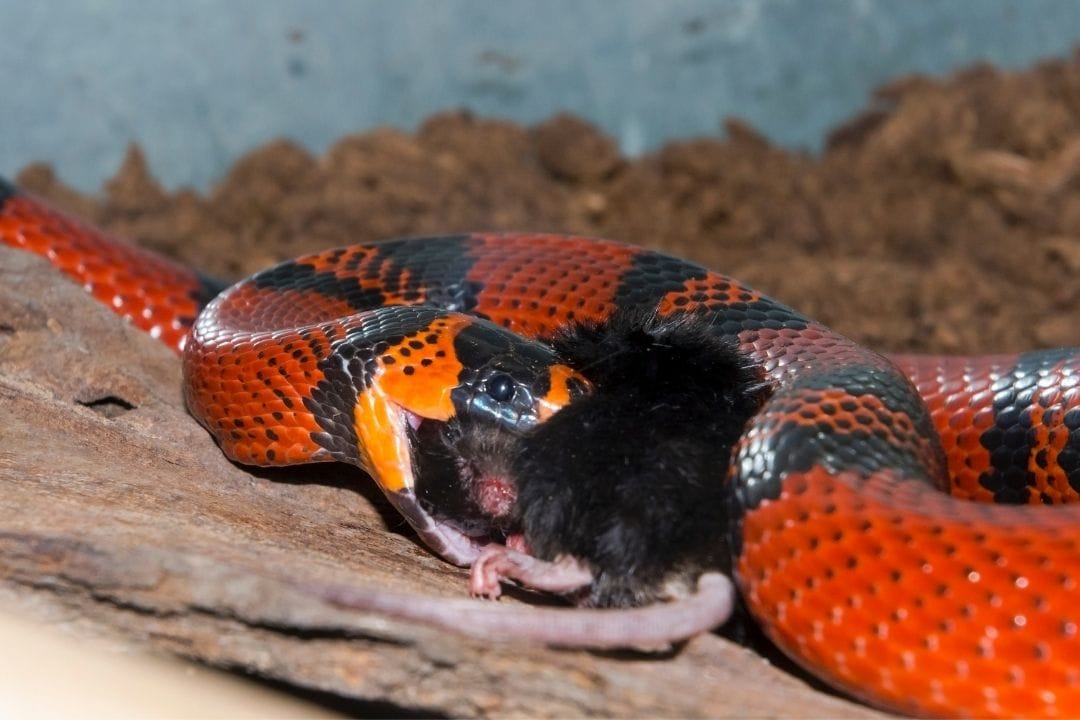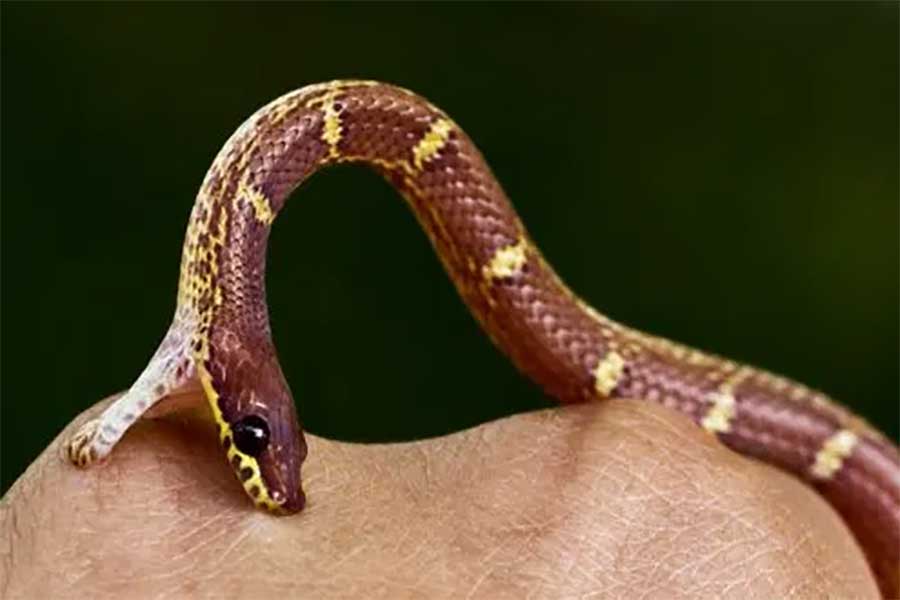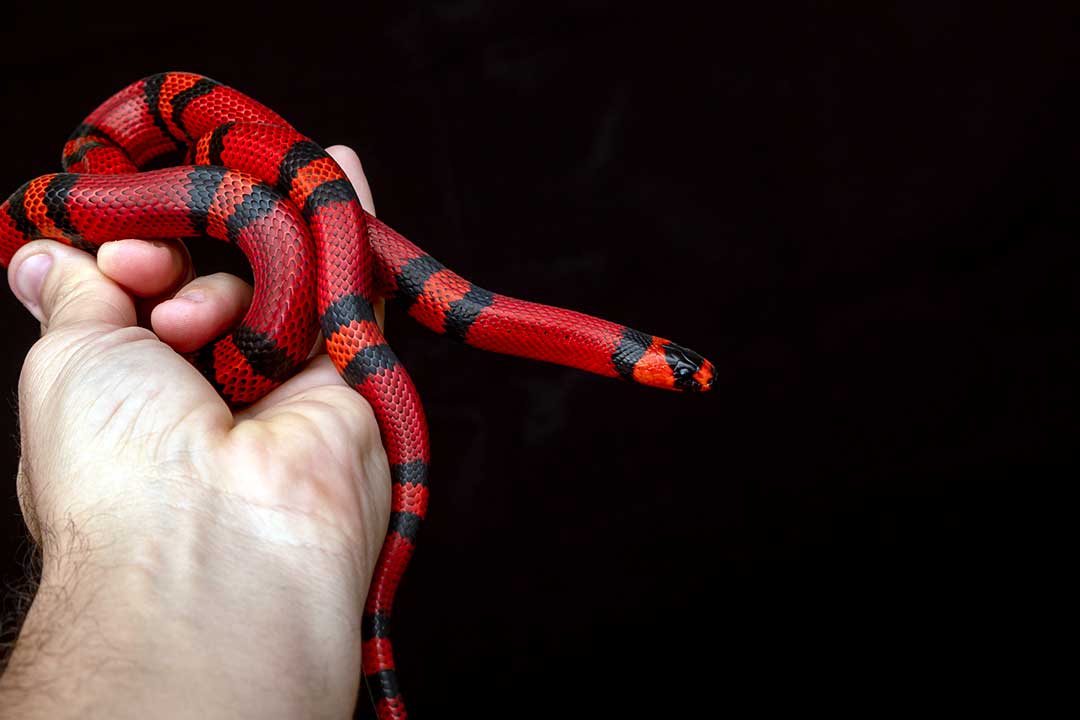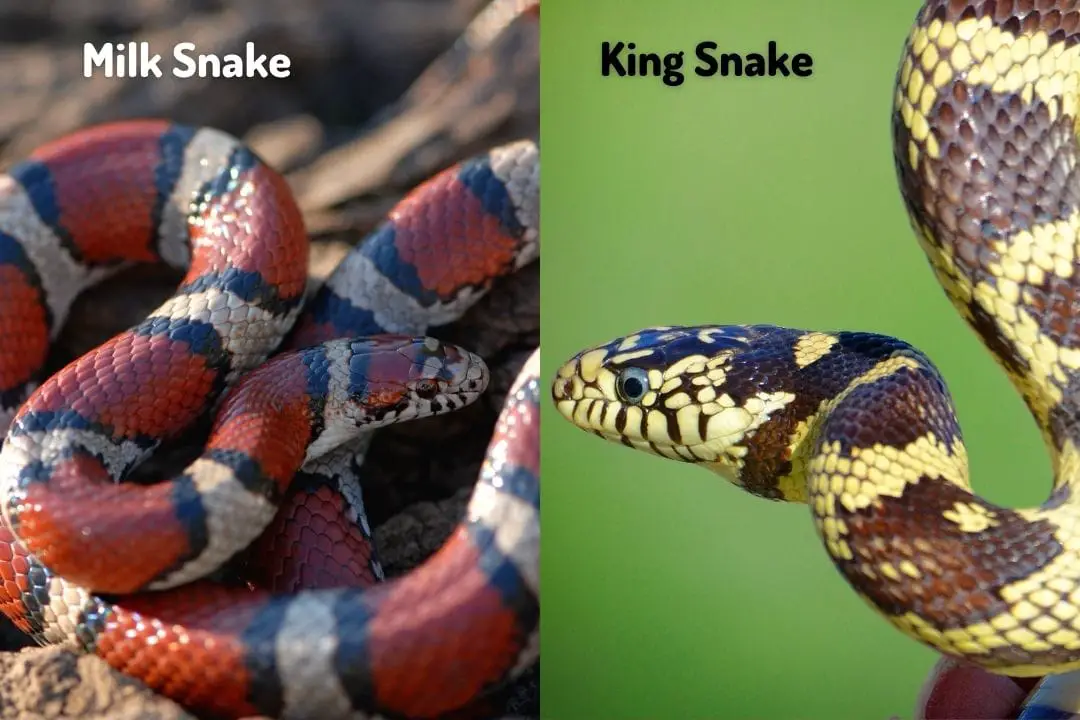Milk snakes are carnivore animals, meaning that they eat other animals to survive, but there is a difference in their food in the wild and in captivity?. So, what do milk snakes eat in the wild and in captivity?
When they live in the wild, milk snakes eat insects, small mammals, such as rats, amphibians, and reptiles. However, when they are kept in captivity, they can be fed with pinky-mice, full-sized mice, and baby rats. The size of their food usually depends on the size of their bodies.
In this article, I will discuss the diet of milk snakes and why it is important. Also, I will elaborate on how often you should feed your pet snake and in what manner you should do that. These animals do not require any special treatment, however, it is essential that you know what their needs are if you want to keep one.
In the wild
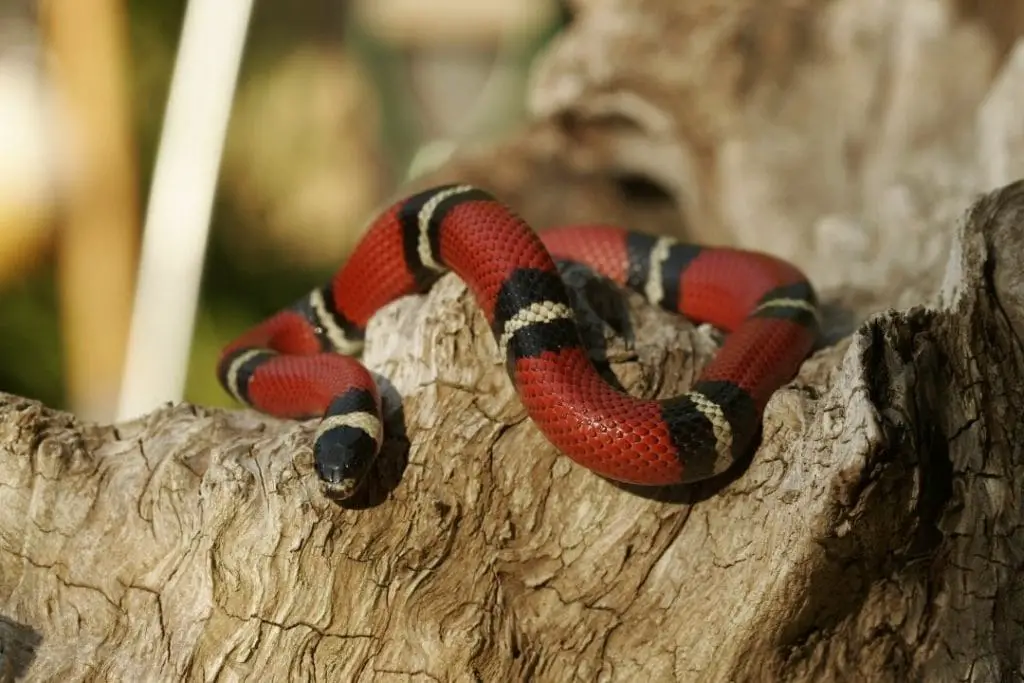
Milk snakes usually live in forests with coniferous and deciduous trees. Also, they can be found in savannas, prairies, near wet places, such as marches and streams, or in some suburban areas. Furthermore, they can be found on farms, where small rodents usually exist.
Since they are considered hunting animals, they eat as often as they can hunt. However, their prey usually depends on the size of their bodies. Therefore, if they can catch it and squeeze it, it means that they can eat it.
Depending on the place where they live, the milk snakes form their diet. Therefore, if a milk snake lives in a forest, it is expected that it eats insects. Since insects are small, a milk snake needs to eat a lot of them in order to survive. This usually refers to the newborns and snakes that are small in size.
However, when they grow up, they learn to hunt and eat small mammals and reptiles.
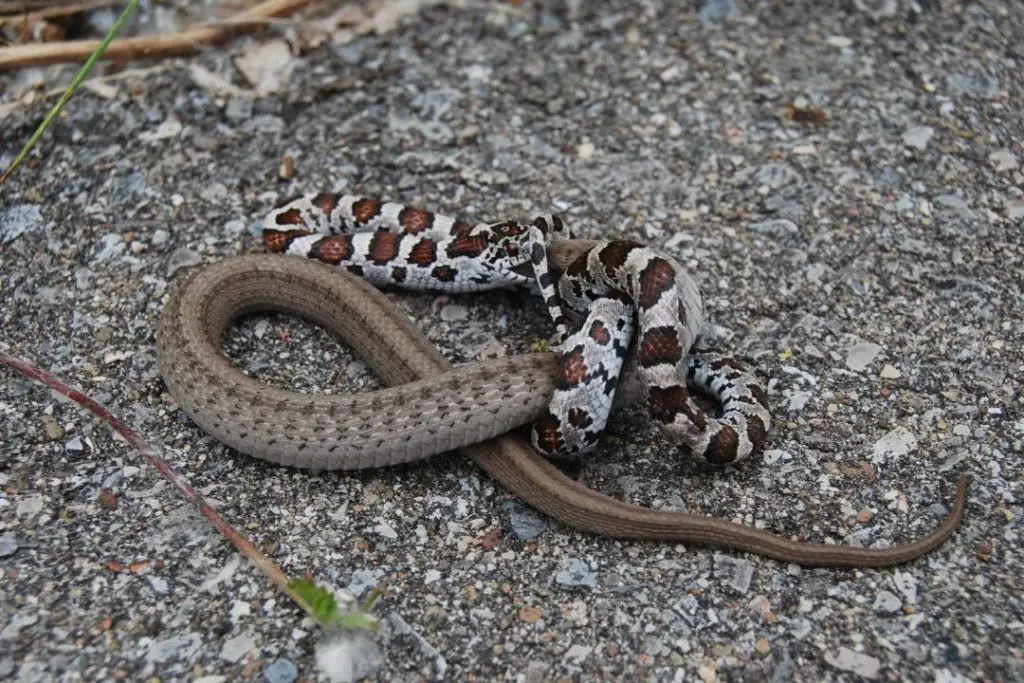
They can also eat the eggs of birds, small fish, and other animals. Again, this depends on their habitat and what animals are present there.
Still, when it comes to wild milk snakes, their main diet consists of rodents, birds, and reptiles. So, they can eat rats, mice, voles, different bird species, lizards, skinks, and even smaller snakes.
It is important to know that snakes usually bit off more than they can digest. This means that when they find prey they can squeeze in their mouth, they will eat it even though they cannot digest it later. So, if you want to keep a snake as a pet, bear in mind that if you give them a lot of food, it can make them sick.
Another fact about wild milk snakes is that they are not poisonous. However, milk snakes are usually confused with coral snakes, and coral snakes are highly dangerous. Therefore, if you see some near you or your house, you should not mistake it for a milk snake.
How Do Milk Snakes Catch Their Prey In The Wild?
Milk snakes behave as nocturnal animals, so they catch their prey at night. They are active hunters, meaning they follow scent trails, and catch their prey with several smaller bites.
The milk snake is a powerful predator. Once it squeezes its prey, it holds it tight between its teeth, until the heart of the prey stops. When that happens, the milk snake swallows it whole.
What Milk Snake Eat in Captivity
Everything you need to know about caring for Milk Snakes in captivity:
Read our Milk Snake Care Sheet (Complete Guide)
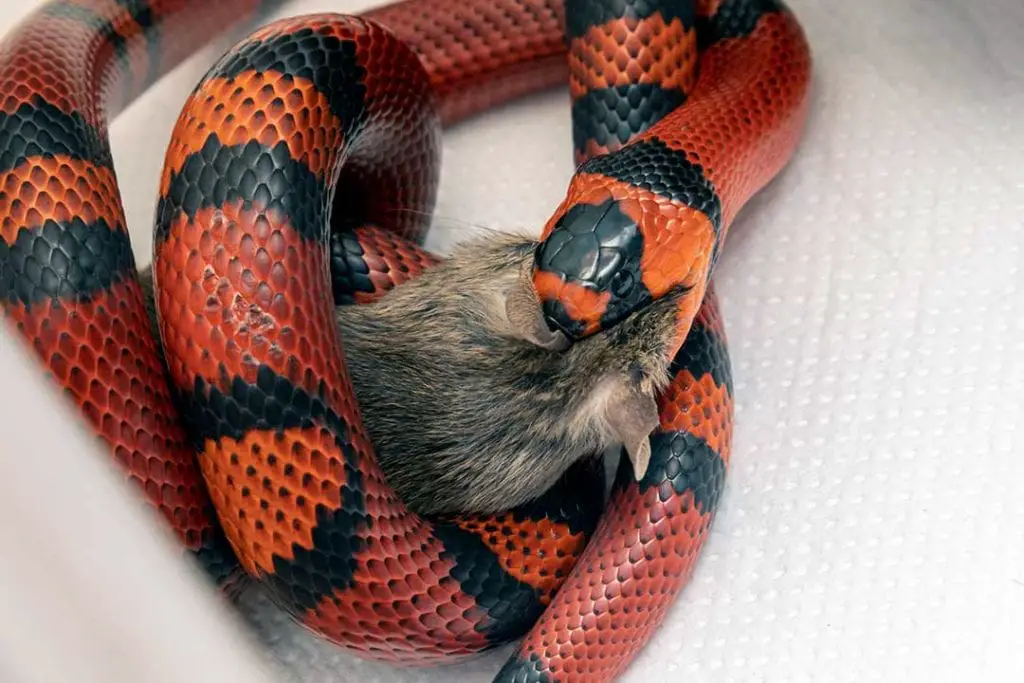
Milk snakes are popular pets as they are easy to care for and they do not require high maintenance. However, if you have a milk snake as a pet, that does not mean that you have to feed it with birds and lizards. There are other types of food that a milk snake can eat and stay happy and healthy.
As I mentioned before, milk snakes do not digest food quickly, therefore they do not need to be fed every day, at least the adult ones.
So, if you keep a hatchling milk snake you will need to feed it once a week, while with the adult milk snake you will have to do it once in two weeks. However, if the milk snake is newly hatched, then the feeding should be done five times a week and after that slowly decrease it.
When it comes to baby milk snakes, it is important to know that they might have the tendency to bite and nip even though they are known to be friendly. The bites are not harmful, but they can hurt, so you might want to put on some gloves and move slowly in the process of feeding.
Hatchling milk snakes are usually fed with pinky-mice because of their size. You should be careful not to give large-size meals to your pet snake to avoid getting it sick. Along with the food, you should always make sure that your milk snake has water.
For adult milk snakes, it is important to remember that they need food once in two weeks. As they digest the food slowly, you do not want to give them food very often.
Once they are fed, you will notice a lump on your pet snake’s body and you should not be concerned as this is how they digest food.
Adult milk snakes can eat rodents, but make sure that you give them the right size. You should not give your snake a meal larger than its thickest part of the body.
Doing so might hurt your snake. You should also make sure that the prey you give to your snake is thawed, i.e. pre-killed and not alive.
Occasionally, you can mix up the milk snake’s diet by adding a small chick or a baby quail. Making a switch from rodents would be a good change for the digestive system of the milk snake. However, the same rule applies here as well – the prey should be thawed.
Why Your Pet Milk Snake Might Not Be Eating
If a milk snake does not seem to have an appetite and does not eat its meals, it might be due to sickness, or some other alternatives that do not relate to illnesses. However, you should always consult a vet in each case.
Your milk snake might not be eating if it is carrying eggs. If your pet has been in touch with a male recently, this might be the reason for not eating. Also, if this happens, you should expect your milk snake to become more aggressive.
Furthermore, if your pet does not eat, it might be preparing for shedding its skin. To check if this is the occasion, you should check the snake’s eyes. If they become milky, and the color of the skin becomes dull, then it is probably shedding in question.
So, you should wait a couple of days before becoming alarmed and consulting the vet. Usually, around this time, your milk snake will get aggressive as in this phase it is vulnerable.
Lastly, if your snake does not eat it might be due to hibernation. Snakes hibernate for 3 months during winter, and if it is cold where you live, it is probably hibernating. However, if it is not winter, then you should consult the vet.
As you can see, milk snakes do not require a lot of care and they are simple to be kept as pets. Even though their diet is simple, you should always feed them by the rules to avoid getting them sick and hurt their digestive system.
Sources:
https://animaldiversity.org/accounts/Lampropeltis_triangulum/
